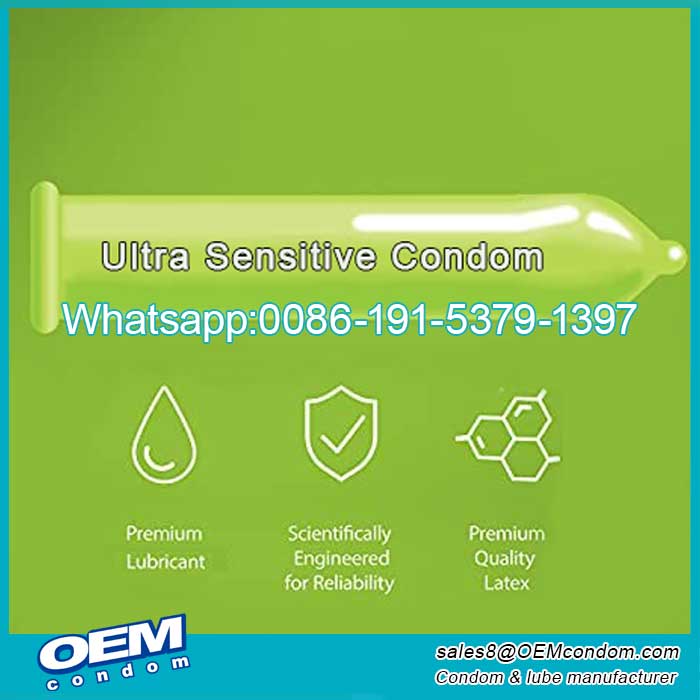
When it comes to sexual health and intimacy, the selection of the right condom can not only enhance your experience but also ensure safety. As consumers become more discerning, the demand for ultra-thin condoms has surged, primarily due to their promise of heightened sensation. This article aims to elucidate the nuances of the thinnest condoms available, deftly balancing the essential factors of sensation and safety.
In exploring ultra-thin condoms, one must first understand the various materials available. Traditional latex has been a staple for condom production, known for its elasticity and durability. However, contemporary innovations have introduced alternative materials such as polyisoprene, polyurethane, and even natural membranes. Each material offers unique qualities, impacting both sensitivity and safety. Examining these materials can help consumers make well-informed decisions.
1. Latex Condoms: Historically, latex condoms have dominated the market. They are robust, provide excellent barrier protection against sexually transmitted infections (STIs), and are relatively low in cost. Thin latex condoms are often less than 0.05 mm thick, offering users a more intimate experience without significantly compromising safety. Nonetheless, individuals with latex allergies should consider other options, as allergic reactions may lead to discomfort or alternative forms of contraception altogether.
2. Polyisoprene Condoms: Polyisoprene is a synthetic rubber that closely mimics the elasticity of latex. Notably, polyisoprene condoms can also be produced ultra-thin, often reaching around 0.05 mm in thickness. These condoms are an excellent alternative for those allergic to latex, delivering an enhanced sensation without sacrificing protection. They are also free of harmful chemicals, making them a more body-friendly option while ensuring the same level of security against STIs and pregnancy as their latex counterparts.
3. Polyurethane Condoms: Polyurethane condoms present another viable option, particularly for individuals seeking a non-latex alternative. Typically thinner than their latex counterparts, polyurethane condoms can be produced as thin as 0.02 mm. This material is known for its ability to conduct heat effectively, which can enhance sensation during intimacy. However, they are more prone to slipping and may not offer the same rigidity as latex or polyisoprene, potentially leading to increased rates of breakage. Understanding these limitations is crucial for users prioritizing sensation.
4. Natural Membrane Condoms: Often crafted from lamb cecum, natural membrane condoms provide a unique alternative, as they are both thin and porous. Ranging around 0.05 mm or less, they are touted for their natural feel and superior heat transfer. However, it is essential to note that these condoms do not provide adequate protection against STIs, making them suitable primarily for monogamous couples who are tested for STIs. Their luxurious sensation and natural material cater to those desiring an authentic intimate experience.
Having delved into the types of materials, it is vital to appreciate the importance of certification and quality assurance in the condom industry. Brands that prioritize thorough testing and adhere to stringent safety standards should be preferred. Certifications such as ISO (International Organization for Standardization) ensure that the products meet high safety and efficacy criteria. It is prudent to explore reputable brands that emphasize transparency in their production processes.
5. Brand Comparisons: Several brands have made a name for themselves in the ultra-thin segment of the market. Popular options include Trojan, Durex, and SKYN. Each brand offers unique selling propositions, from ultra-thin designs to additional features like ribbing for enhanced sensation. Conducting a comparative analysis of these brands can render valuable insights into personal preferences. Users should consider factors such as user reviews, price, and availability when making their selections.
6. User Experience and Feedback: Gleaning insights from user experiences can significantly influence decision-making. Engaging in platforms such as forums and social media can offer anecdotal evidence about the performance of various ultra-thin condoms. Notably, individuals may have diverse reactions based on personal anatomy and preferences. Seeking out credible reviews while being cognizant of subjective biases can refine choices and enhance satisfaction.
7. Safety Considerations: While the desire for heightened sensation is compelling, safety must remain paramount. Ultras-thin condoms, regardless of their material, still hold the same risk of breakage if misused. Proper application techniques, such as checking the expiration date and ensuring the condom is stored in a cool, dry place, are critical. Moreover, relying solely on ultra-thin condoms may not be sufficient for STI prevention. Users must remain vigilant and consider accompanying birth control methods to bolster protection.
Ultimately, the quest for the thinnest condoms necessitates a balanced approach, harmonizing the aspects of sensation with rigorously upheld safety. Users should explore the diverse range of available products, drawing upon material characteristics, user feedback, brand comparisons, and rigorous adherence to safety standards. The right choice ensures not only pleasure but also a conscientious commitment to sexual health and responsibility. As the landscape of intimacy continues to evolve, informed consumers can navigate this realm confidently, prioritizing both enjoyment and safeguarding their well-being.
